Acer rubrum
Most spectacular of the native maples in bloom
Acer rubrum red maple
When we think of spring wildflowers, we often envision bluebells and trout lilies. Many types of trees, however, also bloom in the spring and often go unnoticed except for those allergic to their pollen. Of the several kinds of wind-pollinated trees in this area, one of most colorful is the red maple, especially when viewed close up. Even though individual flowers are small the overall effect of a large tree in bloom can be quite spectacular.
In our state, the maples tend to bloom in late March or in April. Since they are wind-pollinated they produce no scent or nectar. They do have 5 small petals - a feature not found in all wind-pollinated species. Each tree usually has different male and female flowers on separate branches. Some flowers may also be “perfect”—having both male stamens and female pistils. Female flowers tend to be showier with redder color. Male flowers have between 4 and 12 stamens, but the usual number is 8. The flowers occur in clusters on or near the tips of branches. The male flowers produce large amounts of pollen that is light enough to blow in the wind for a considerable distance. Tree pollen is responsible for a lot of spring hay fever symptoms in humans.
When the egg is fertilized the fruit that develops is called the samaras—the single-winged helicopter fruit typical of the maple trees. These are formed in pairs and are dispersed during a period of 1 to 2 weeks from April through July. The red maple tree is a common medium-sized native tree in the woods of eastern United States and a popular yard ornamental tree.
Habitat & Range
Grows along wooded slopes, in swamps, bogs and moist areas.
Present throughout the state.
Range: Eastern United States
| EMP: | FAC |
|---|---|
| NCNE: | FAC |
Phenology
Flowers late March through early May.
Characteristics
Tree single turnk, narrow dense crown
Flowers 5 petals & 5 sepals; occur in clusters at tips of branches; plants are usually dioecious, can have both catkins on the same tree or more rarely have perfect flowers
Male catkins pink to red, have long stamens (4-12, average 8) that extend beyond the petals (5) and are covered in yellow pollen at the tips
Female catkins bright red, stigma extends past the petal to catch pollen
Leaves lobed with 3 to 5 lobes; opposite; petiole red
Bark gray, smooth, with narrow irregular cracks
Height 40 to 60 feet (medium-sized)
Fall Color red to orange
Age avg. 80 to 100 yrs, max 200 yrs
Plant Codes
S-rank: S5 (Secure)
G-rank: G5 (Secure)



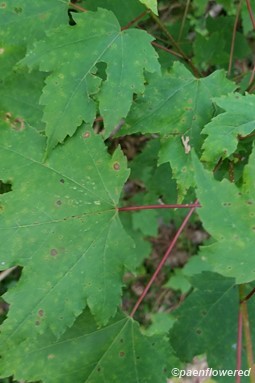
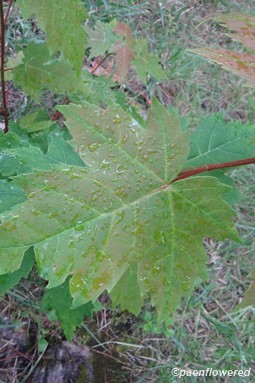
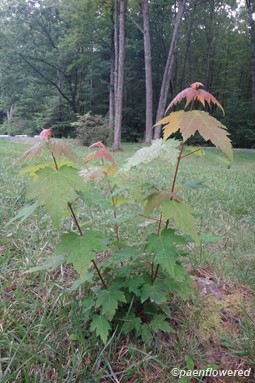

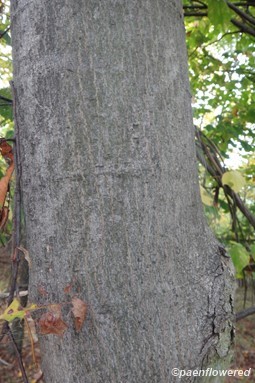

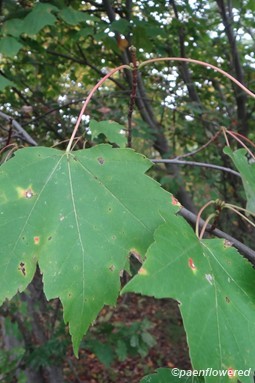


.jpg?v=638144254380000000)






.jpg?v=638376900410000000)
Comments
Have you spotted this plant in your area? We'd love to hear about your experience! Share your comments or questions about the plant below. Comments are moderated before posting.